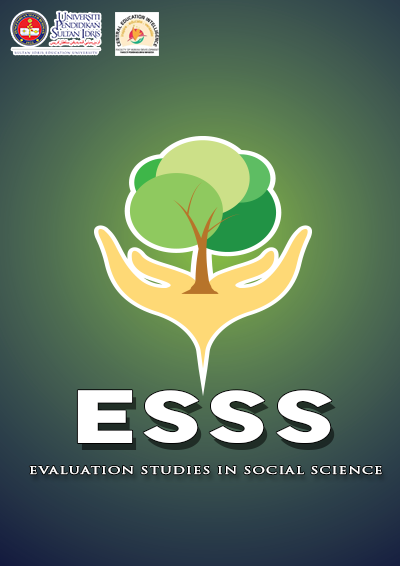Case report on Assessment and Management of Conduct Disorder of a 12-year-old
DOI:
https://doi.org/10.37134/esss.vol4.1.5.2023Keywords:
Conduct disorder, I.Q Assessment, Child and adolescence, Cognive-Behavioural-Therapy, NigeriaAbstract
Case reports can be valuable in medical and psychological research, providing detailed and comprehensive information about specific cases. A detailed case report can provide insight into the identification of specific symptoms and behaviours displayed by the child, contributing to diagnosis, improving understanding, and informing treatment Strategies/options used to manage their condition. This information can be used to inform future research and treatment strategies for similar cases. Client Q.T. was a 12-year-old boy who presented with complaints of inappropriate age behaviour and being a slow learner. In formal assessment: Slosson Drawing Coordination Test (SDCT); Ravens Progressive Matrices (RPM); Draw a Person I.Q; Draw a Person (Personality); and the Clinician-Rated Severity of Conduct Disorder were used. In the informal assessment: clinical interviews; mental state examinations; and subjective ratings were used. The Client was diagnosed with conduct disorder. The management plan was devised based on cognitive behavioural therapy techniques such as motivational interviews, Family therapy, art therapy, and social therapy. A total of 14 sessions (60 minutes/ per week) were conducted. A case report on assessing and managing conduct disorder in a 12-year-old can offer valuable insights into the disorder and inform future research and treatment strategies.The prevalence rate of conduct disorder is within the global range in our environment and tends to affect younger children. Policies should be implemented to screen these children at the school entrance to render appropriate health intervention.
Downloads
References
Akpan, M. U., Hogan, E. J., Okpokowuruk, F. S., & Ikpeme, E. E. (2020). Conduct disorder among primary schoolchildren in Southern Nigeria. Nigerian Medical Journal: Journal of the Nigeria Medical Association, 61(6), 334.
American Psychiatric Association. (2013). Diagnostic and statistical manual of mental disorders (5th ed.). https://doi.org/10.1176/appi.books.97 80890425596
Aroyewun, A. B. (2012). Psychological Assessment: The Key that Opens the Door to the Unknown in Clinical Practice. Ife PsychologIA, 20(2).
Buck, J. N. (1948). The HTP technique; a qualitative and quantitative scoring manual. Journal of Clinical Psychology, 4, 317-396.
https://doi.org/10.1002/1097-4679(194810)4:4<317::AID-JCLP2270040402>3.0.CO;2-6
Ebikabowei, M. (2021). Psychological and Socio-economic Instigators and Manifestations of Conduct Disorder among Secondary School Students in Ekeremor LGA, Bayelsa State, Nigeria. Covenant International Journal of Psychology, 6(2). Retrieved from https://journals.covenantuniversity.edu.ng/index.php/cijp/article/view/2806
Ezenwa, M. O., Abamara, E., & Ojiaku, B. C. (2010). Revalidation of Draw-A-Person Test. Practicum Psychologia, 2(1), 9-13.
Gilla, D., Rana, D. K., & Deepak, KP. (2021). Application of mental status examination in homoeopathic prescribing. International Journal of Homoeopathic Sciences, 5(3), 224-230. DOI: 10.33545/26164485.2021.v5.i3d.427
Goodenough, F. L. (1926). Measurement of intelligence by drawings. World Book Company.
Hambly, J. L., Khan, S., McDermott, B., Bor, W., & Haywood, A. (2016). Pharmacotherapy of conduct disorder: Challenges, options and future directions. Journal of Psychopharmacology, 30(10), 967-975.
Iloh, K. K., Chidiebere, O. D., Iloh, O. N., Igbokwe, O. O., Nwaneli, E. I., & Akubuilo, U. (2021). Intelligence quotient and its determinants using Draw-A-Person Test and Ravens progressive matrices among primary school children in Enugu, Southeast Nigeria. Alexandria Journal of Pediatrics, 34(2), 149.
Johnson, V. A., Kemp, A. H., Heard, R., Lennings, C. J., & Hickie, I. B. (2015). Childhood-versus adolescent-onset antisocial youth with conduct disorder: Psychiatric illness, neuropsychological and psychosocial function. PloS one, 10(4), e0121627.
Månsson, K. N., Lueken, U., & Frick, A. (2021). Enriching CBT by neuroscience: Novel avenues to achieve personalized treatments. International Journal of Cognitive Therapy, 14, 182-195.
Mayberg, H. S. (2009). Targeted electrode-based modulation of neural circuits for depression. The Journal of clinical investigation, 119(4), 717-725.
Mohan, L., Yilanli, M., & Ray, S. (2023). Conduct Disorder. In StatPearls. StatPearls Publishing.
Ojuope A (2021) Parental Attachment, Physical Abuse and Conduct Disorder among Secondary School Adolescents in Ondo State, Nigeria. J Psychiatry 24:p466
Ojuope, A. V., & Ekunudayo, O. O. (2020). Conduct Disorder and Its Relationship with Socio-Demographics Factors among Secondary School Adolescents in Ondo State, Nigeria. American Journal of Applied Psychology, 9(3), 60-65.
Oladeji, B. D., Makanjuola, V. A., & Gureje, O. (2010). Family-related adverse childhood experiences as risk factors for psychiatric disorders in Nigeria. The British Journal of Psychiatry, 196(3), 186-191.
Oshodi, Y. O., Adeyemi, J. D., & Suleiman, T. F. (2012). Mental health challenges among children of vagrant mentally ill persons removed from the streets in a Southwestern Nigerian surburb. Neuropsychiatrie de l'enfance et de l'adolescence, 5(60), S187.
Pardini, D., & Frick, P. J. (2013). Multiple developmental pathways to conduct disorder: Current conceptualizations and clinical implications. Journal of the Canadian Academy of Child and Adolescent Psychiatry, 22(1), 20.
Pashak, T. J., & Heron, M. R. (2022). Build rapport and collect data: A teaching resource on the clinical interviewing intake. Discover Psychology, 2(1), 1-11.
Polanczyk, G. V., Salum, G. A., Sugaya, L. S., Caye, A., & Rohde, L. A. (2015). Annual research review: A meta‐analysis of the worldwide prevalence of mental disorders in children and adolescents. Journal of Child Psychology and Psychiatry, 56(3), 345-365.
Raven, J. C. (1936). Mental tests used in genetic, The performance of related individuals on tests mainly educative and mainly reproductive. MSC thesisUniv London.
Salvatore, J. E., & Dick, D. M. (2018). Genetic influences on conduct disorder. Neuroscience & Biobehavioral Reviews, 91, 91-101.
Scott, J. G., Mihalopoulos, C., Erskine, H. E., Roberts, J., & Rahman, A. (2016). Childhood mental and developmental disorders. Mental, Neurological, and Substance Use Disorders: Disease Control Priorities, Third Edition (Volume 4).
Slosson, R. L. (1967). Slosson Drawing Coordination. East Aurora, NY: Slosson Educational Publ.
Sommers-Flanagan, J., Zeleke, W. A., & Hood, M. E. (2015). The clinical interview. R., Cautin, S. Lilienfeld,(Eds.), The Encyclopedia of Clinical Psychology, 1-9.
Ward, B. (2021). Evidence-Based Treatments for Conduct Disorders: A Systematic Review. Capstone Projects. Paper 6. https://digitalcommons.wku.edu/psychology_capstone/6
Downloads
Published
How to Cite
Issue
Section
License
Copyright (c) 2023 Addah Temple Tamuno-opubo, Salaudeen Haneefat Adedolapo, Abimbola Rahman Akinyemi, Allo Faith Ashi, Rahamat Abdulrauf Bankole, Onyesom Benjamin

This work is licensed under a Creative Commons Attribution-NonCommercial-ShareAlike 4.0 International License.





